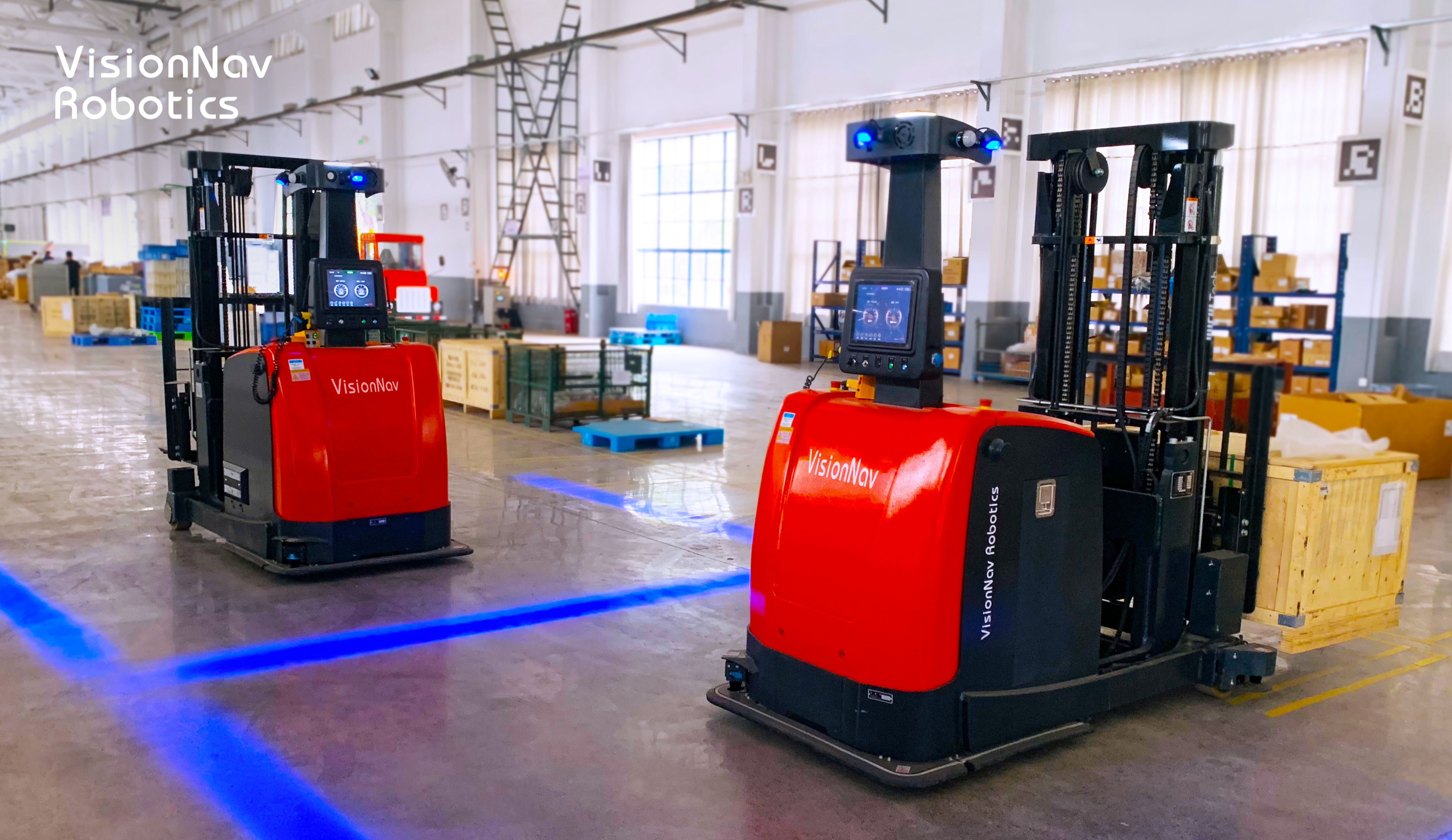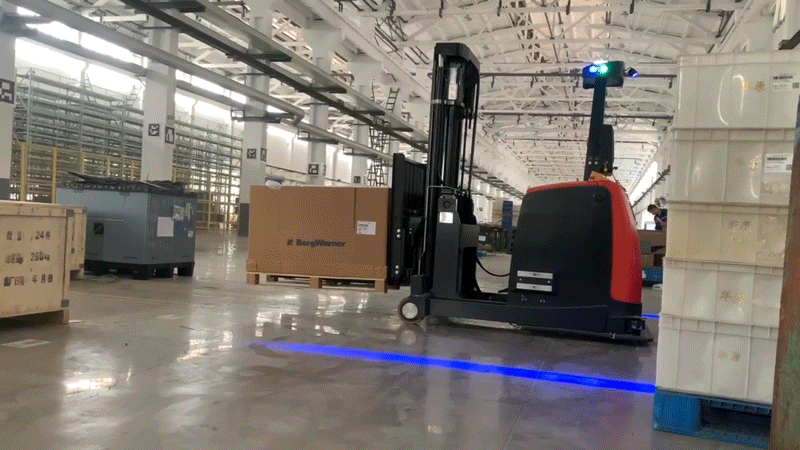In complex manufacturing environments, challenges like delayed material arrival, disorganized handling, and mismatched pallets and components often disrupt internal logistics. These issues escalate time costs in material transfers between processes, creating inefficiencies where some stations are idle while others are overloaded. Optimizing internal logistics to enable seamless process connections and minimize waiting times is critical to achieving operational excellence.
The client, a leading equipment manufacturer based in Southwest China, focuses on engine component production and involves multiple transfer zones. The site uses over four types of load carriers, requiring a robust and flexible logistics solution. To address these challenges, VisionNav Robotics proposed a highly adaptable internal logistics automation solution. By integrating a top-level control system and terminal devices, the solution ensures seamless point-to-point transfers of finished components, tightens inter-process connections, automates storage management, and enhances logistics efficiency.

Support for Multiple Load Carrier Models
The site features a diverse range of finished components and load carriers, requiring automated forklifts to identify carrier dimensions and adjust fork spacing for precise compatibility.
Seamless Inter-process Material Transfers
The project encompasses several workflows:
The warehouse management system (WMS) must synchronize location and carrier data, enabling smooth coordination with autonomous forklifts to ensure uninterrupted material transfers.

Based on extensive experience in the machinery manufacturing sector, VisionNav Robotics delivered a highly flexible logistics automation solution. The implementation involved:
This configuration ensures efficient, uninterrupted transfers of finished components between zones.

Inbound Workflow:
Transfer Workflow:

Reduced Operational Costs:
Without altering existing warehouse configurations, the deployment of VNP20 forklifts enables automated transfers between the buffer, storage, and picking zones, reducing labor costs by 1–3x. The VNP20's adaptive laser sensors precisely identify load carrier specifications, adjusting fork spacing and vehicle positioning for high-accuracy handling.
Enhanced Transfer Efficiency:
The dual VNP20 forklifts excel through advanced path planning and dispatching, akin to a relay race seamlessly meeting demands. Their stability ensures continuous operation without interruptions such as breakdowns or handling failures. This streamlined workflow reduces idle time and boosts overall transfer efficiency by 30%.
As smart manufacturing continues to evolve, VisionNav Robotics' internal logistics solutions ensure tighter integration between manufacturing processes. By automating material transfers across production stages, these systems drive operational efficiency and facilitate the seamless operation of manufacturing logistics.